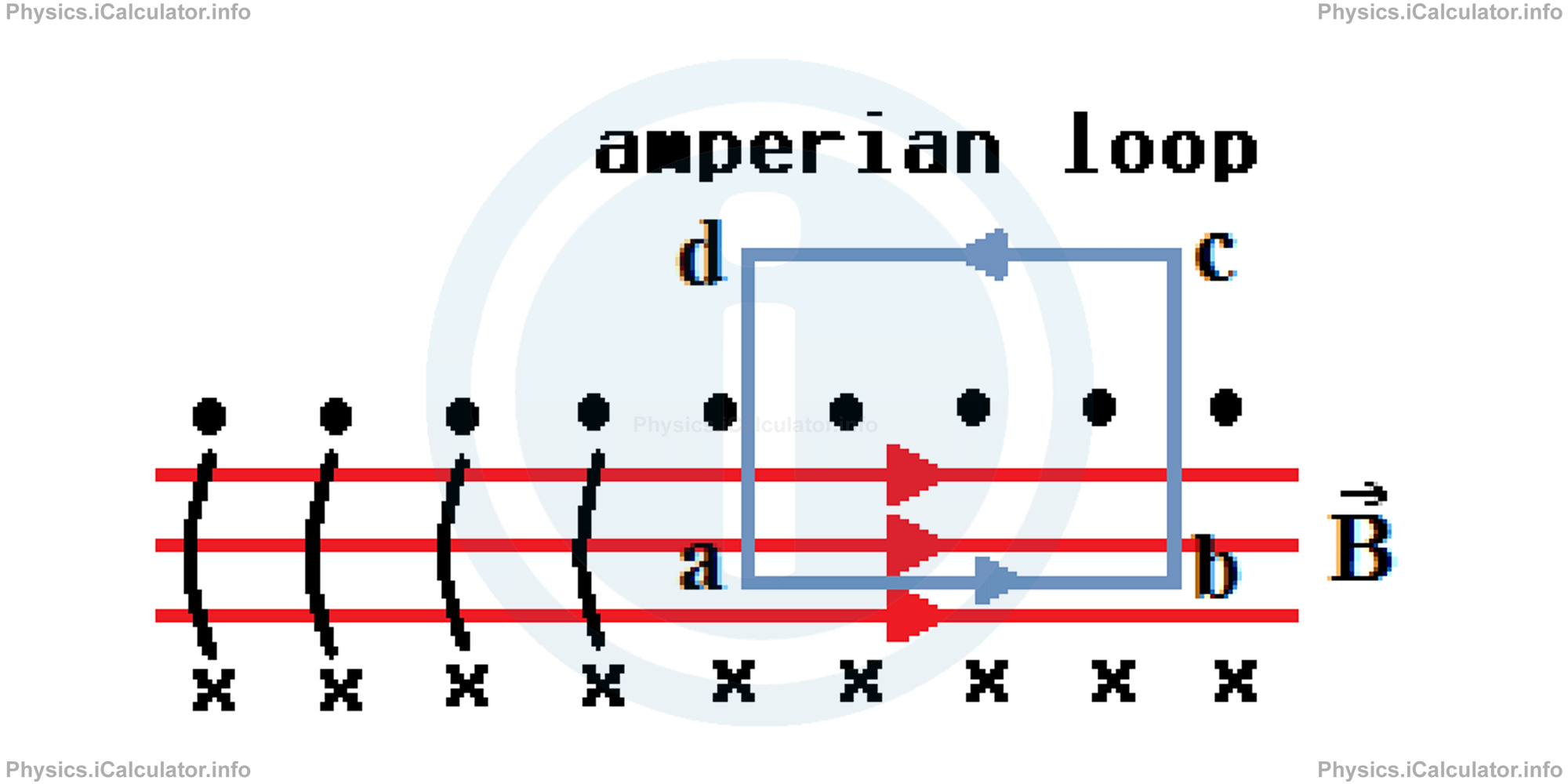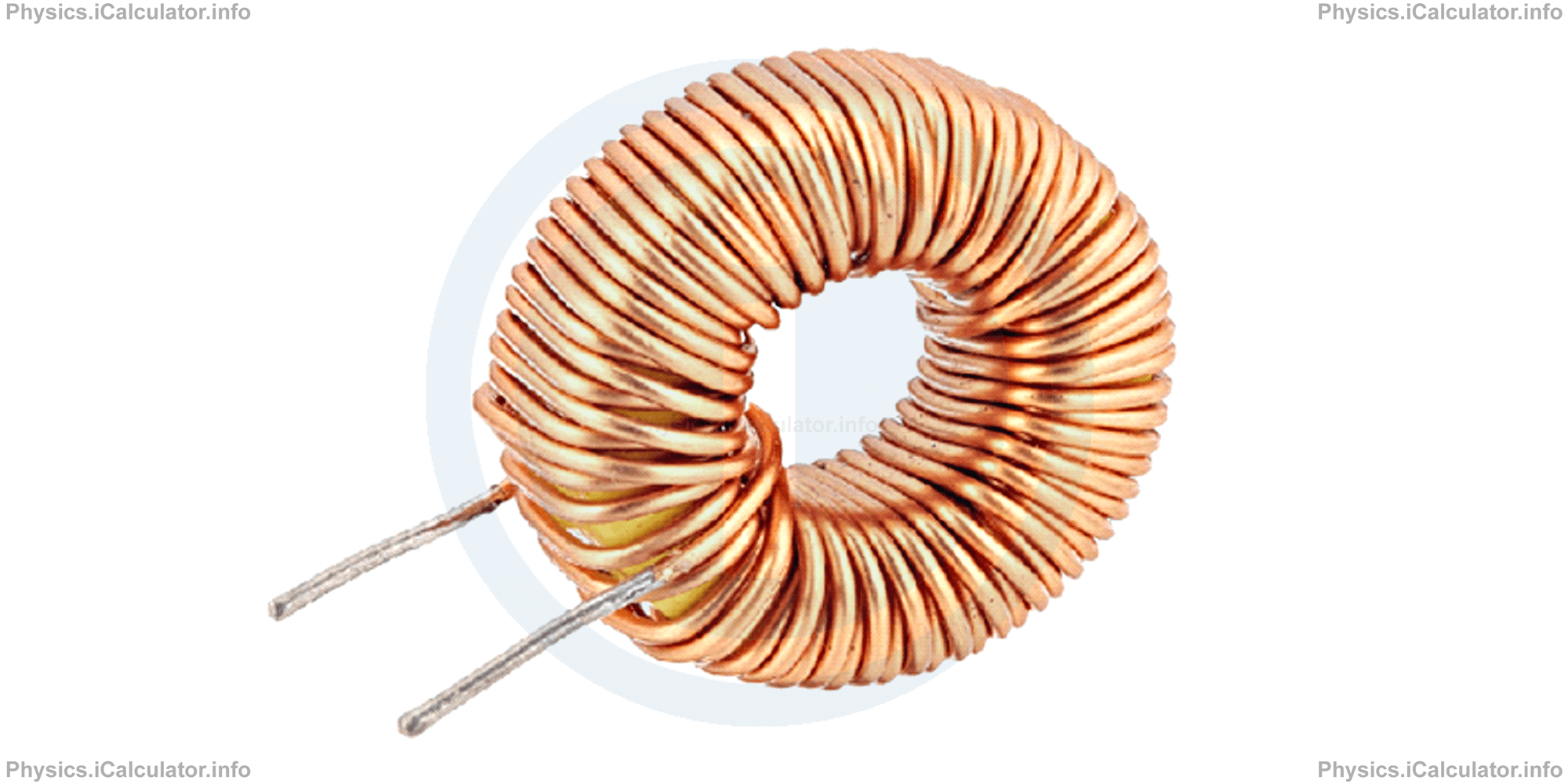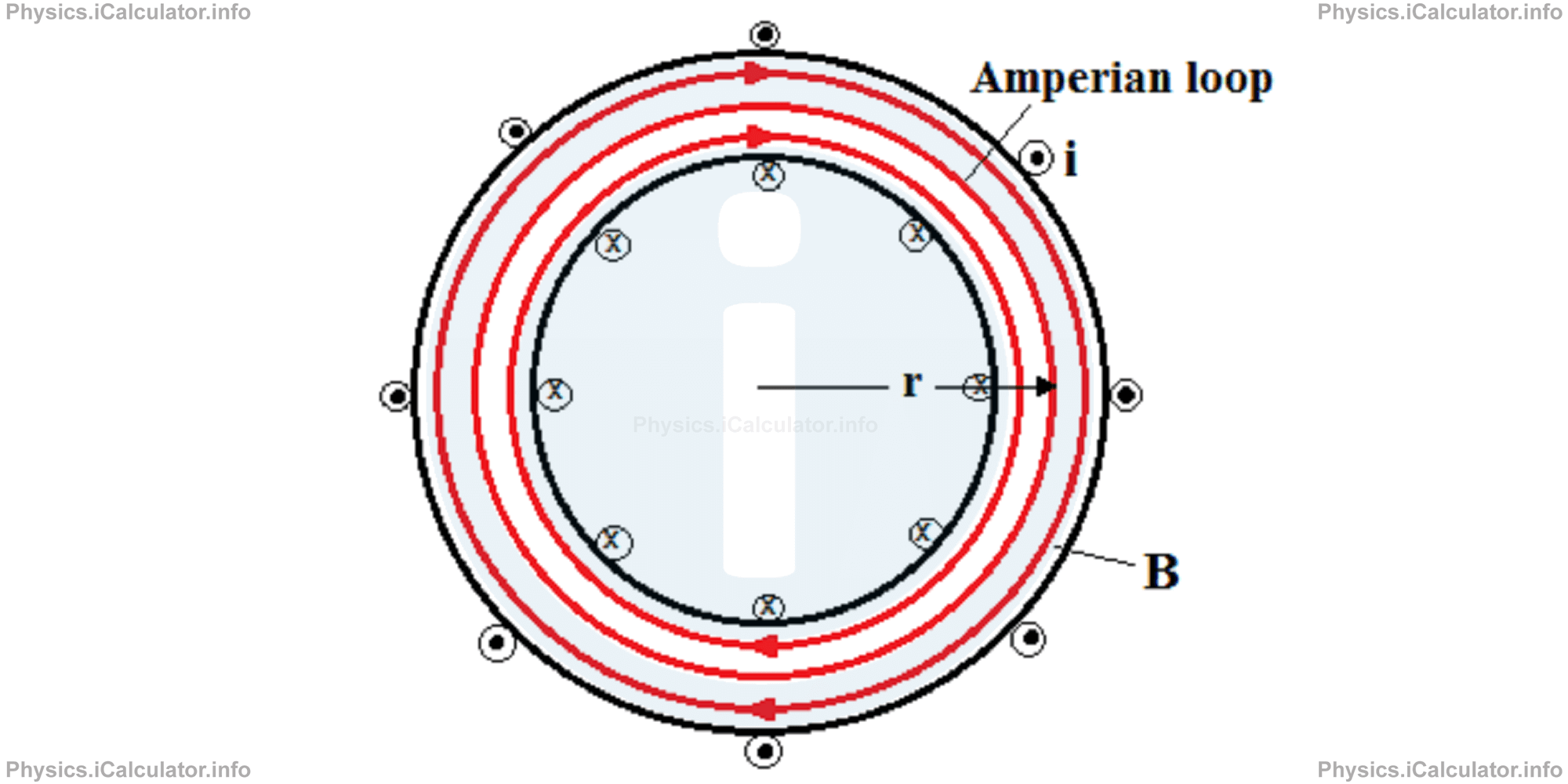Menu
Physics Lesson 16.6.5 - Ampere's Law Applied in Solenoids and Toroids
Please provide a rating, it takes seconds and helps us to keep this resource free for all to use
Welcome to our Physics lesson on Ampere's Law Applied in Solenoids and Toroids, this is the fifth lesson of our suite of physics lessons covering the topic of Ampere's Law, you can find links to the other lessons within this tutorial and access additional physics learning resources below this lesson.
Ampere's Law Applied in Solenoids and Toroids
In tutorial 16.2 we have explained that the magnetic field produced by a solenoid which contains N turns is
If we express this equation in terms of the number of turns per unit length n instead of N/L, we obtain for the magnetic field inside the solenoid
This formula is obtained even when we use Ampere's law approach. For this, we have to consider a rectangular Amperial loop abcd as shown below.

An ideal solenoid has a uniform magnetic field inside (the parallel lines in the figure) and zero outside it. Using the rectangular loop abcda, we write the closed integral ∮BdL as the sum of four integrals (one for each segment). Thus, we have:
The only integral, which has a non-zero value, is the first one. On the other hand, the integral according the path cd is zero because magnetic field outside the solenoid is zero. Also, the integrals according the paths bc and da are both zero as the magnetic field lines are perpendicular to the paths (cos 90° = 0). Therefore, if we denote the length ab = h we obtain
As for the net current Iencl enclosed within the Amperian loop, we have
where 'I' is the current flowing through the entire solenoid.
Combining the general form of Ampere's law
with the above (transformed) form of this law, we obtain
or
This is the same formula obtained in 16.2 for the magnetic field inside a solenoid but now using Ampere's law.
A toroid is a hollow solenoid that has been curved until its two ends meet, forming a sort of hollow bracelet.

We can determine the magnetic field inside the toroid (inside the bracelet-like shape) using Ampere's law.
From symmetry of toroid it is easy to conclude that the magnetic field lines inside a toroid are concentric circles. We can choose a concentric circle of radius r as an Amperian loop.

When solving the integral of Ampere's Law for toroid
we obtain
where i is the current in the toroid windings (it is positive for windings included inside the Amperian loop) and N is the total number of turns. Hence, we obtain for the magnetic field inside the toroid:
Unlike in solenoids, the magnetic field B is not constant throughout the cross-section of toroids. In addition, the magnetic field outside a toroid is zero.
The direction of magnetic field in toroid can be determined in the same way as in solenoids, i.e. by using the curled right-hand rule in which we grasp the toroid with our right hand (the four fingers are in the direction of current) and the outstretched thumb shows the direction of magnetic field.
Example 2
A toroid having 500 turns has an inner diameter d = 3 cm and an outer diameter D = 5 cm. What is the magnetic field at centre of cross section of toroid if the current flowing through it is 20 mA?
Solution 2
The centre of cross-section of toroid is at any midpoint between the inner and outer radius. This position corresponds to the value of r in the formula (as in the figure shown in theory). Thus, we have
= 3 cm + 5cm/2
= 4 cm
= 4 × 10-2 m
Giving that N = 500 = 5 × 102 and iencl = 20 mA = 0.02 A = 2 × 10-2 A, we obtain
= (4π × 10-7 N/A2 ) ∙ (2 × 10-2 A) ∙ (5 × 102 )/2π ∙ (4 × 10-2 m)
= 5 × 10-5 T
You have reached the end of Physics lesson 16.6.5 Ampere's Law Applied in Solenoids and Toroids. There are 5 lessons in this physics tutorial covering Ampere's Law, you can access all the lessons from this tutorial below.
More Ampere's Law Lessons and Learning Resources
Whats next?
Enjoy the "Ampere's Law Applied in Solenoids and Toroids" physics lesson? People who liked the "Ampere's Law lesson found the following resources useful:
- Solenoids Toriods Feedback. Helps other - Leave a rating for this solenoids toriods (see below)
- Magnetism Physics tutorial: Ampere's Law. Read the Ampere's Law physics tutorial and build your physics knowledge of Magnetism
- Magnetism Revision Notes: Ampere's Law. Print the notes so you can revise the key points covered in the physics tutorial for Ampere's Law
- Magnetism Practice Questions: Ampere's Law. Test and improve your knowledge of Ampere's Law with example questins and answers
- Check your calculations for Magnetism questions with our excellent Magnetism calculators which contain full equations and calculations clearly displayed line by line. See the Magnetism Calculators by iCalculator™ below.
- Continuing learning magnetism - read our next physics tutorial: Faraday's Law of Induction
Help others Learning Physics just like you
Please provide a rating, it takes seconds and helps us to keep this resource free for all to use
We hope you found this Physics lesson "Ampere's Law" useful. If you did it would be great if you could spare the time to rate this physics lesson (simply click on the number of stars that match your assessment of this physics learning aide) and/or share on social media, this helps us identify popular tutorials and calculators and expand our free learning resources to support our users around the world have free access to expand their knowledge of physics and other disciplines.
Magnetism Calculators by iCalculator™
- Angular Frequency Of Oscillations In Rlc Circuit Calculator
- Calculating Magnetic Field Using The Amperes Law
- Capacitive Reactance Calculator
- Current In A Rl Circuit Calculator
- Displacement Current Calculator
- Electric Charge Stored In The Capacitor Of A Rlc Circuit In Damped Oscillations Calculator
- Electric Power In A Ac Circuit Calculator
- Energy Decay As A Function Of Time In Damped Oscillations Calculator
- Energy Density Of Magnetic Field Calculator
- Energy In A Lc Circuit Calculator
- Faradays Law Calculator
- Frequency Of Oscillations In A Lc Circuit Calculator
- Impedance Calculator
- Induced Emf As A Motional Emf Calculator
- Inductive Reactance Calculator
- Lorentz Force Calculator
- Magnetic Dipole Moment Calculator
- Magnetic Field At Centre Of A Current Carrying Loop Calculator
- Magnetic Field In Terms Of Electric Field Change Calculator
- Magnetic Field Inside A Long Stretched Current Carrying Wire Calculator
- Magnetic Field Inside A Solenoid Calculator
- Magnetic Field Inside A Toroid Calculator
- Magnetic Field Produced Around A Long Current Carrying Wire
- Magnetic Flux Calculator
- Magnetic Force Acting On A Moving Charge Inside A Uniform Magnetic Field Calculator
- Magnetic Force Between Two Parallel Current Carrying Wires Calculator
- Magnetic Potential Energy Stored In An Inductor Calculator
- Output Current In A Transformer Calculator
- Phase Constant In A Rlc Circuit Calculator
- Power Factor In A Rlc Circuit Calculator
- Power Induced On A Metal Bar Moving Inside A Magnetic Field Due To An Applied Force Calculator
- Radius Of Trajectory And Period Of A Charge Moving Inside A Uniform Magnetic Field Calculator
- Self Induced Emf Calculator
- Self Inductance Calculator
- Torque Produced By A Rectangular Coil Inside A Uniform Magnetic Field Calculator
- Work Done On A Magnetic Dipole Calculator